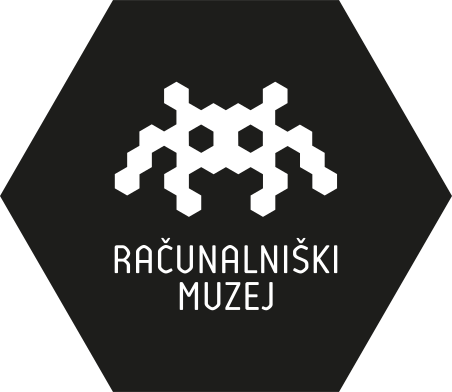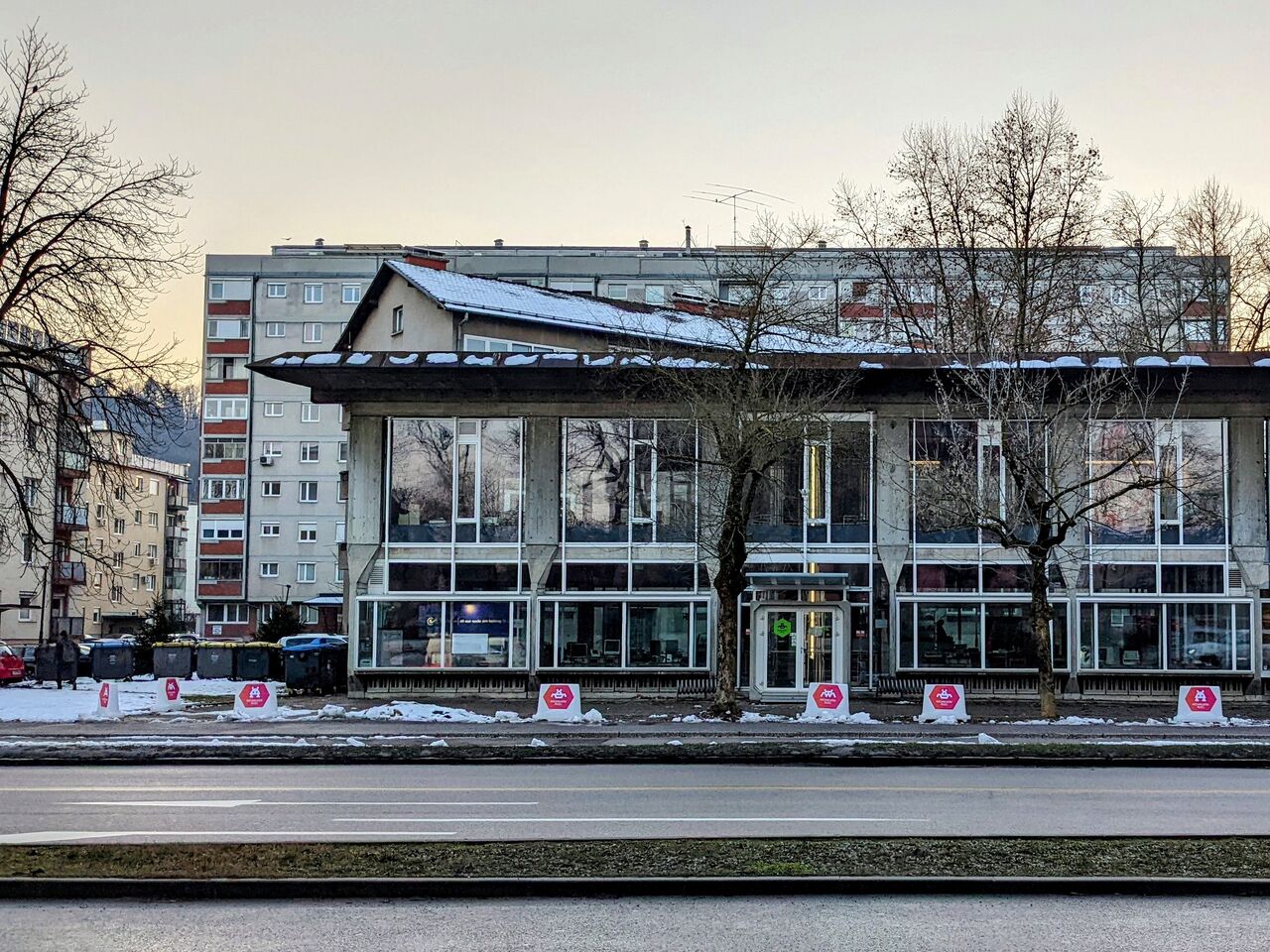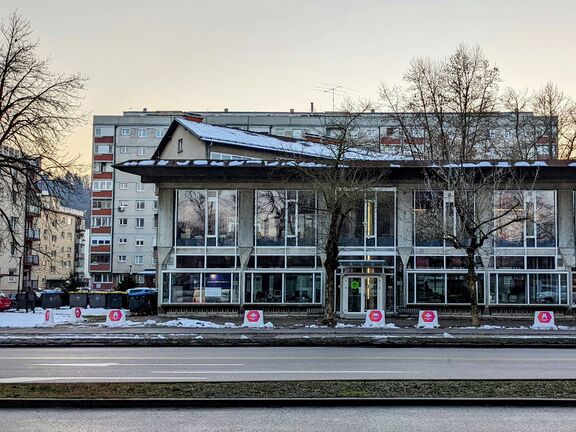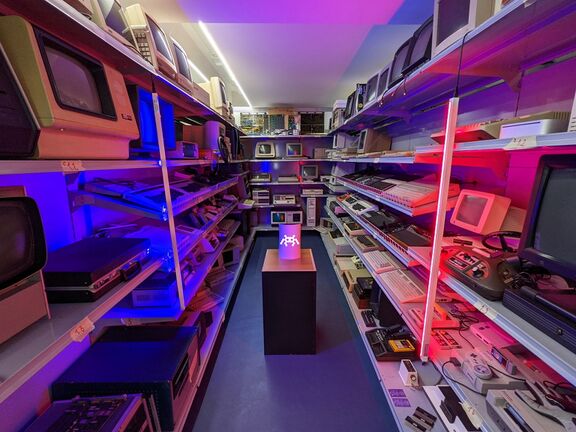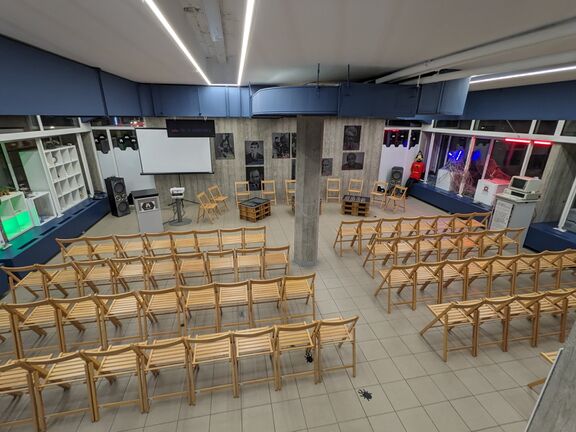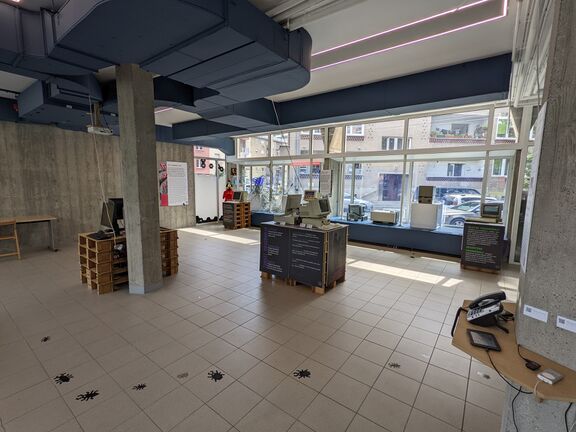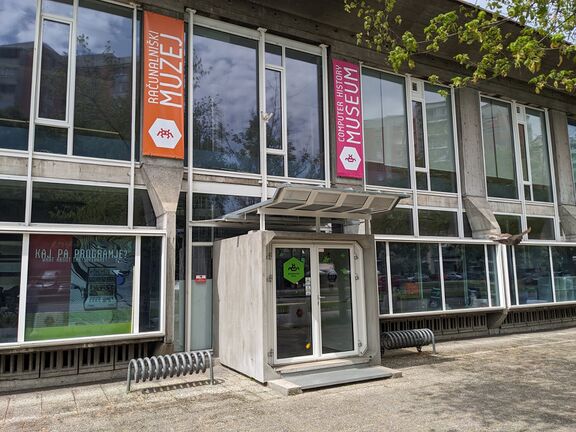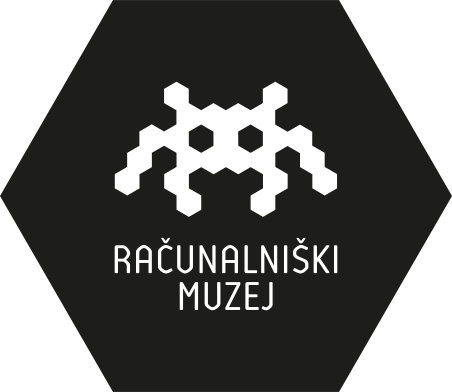Difference between revisions of "Computer History Museum Slovenia"
m (Ziva moved page Slovenian Computer History Museum to Computer History Museum Slovenia) |
|||
| (18 intermediate revisions by 4 users not shown) | |||
| Line 4: | Line 4: | ||
}} | }} | ||
{{Infobox | {{Infobox | ||
| − | | name = Computer Museum | + | | name = Slovenian Computer History Museum |
| local name = Računalniški muzej | | local name = Računalniški muzej | ||
| street = Celovška 111 | | street = Celovška 111 | ||
| town = SI-1000 Ljubljana | | town = SI-1000 Ljubljana | ||
| + | | logo = Logo.svg | ||
| telephone = | | telephone = | ||
| email = info@racunalniski-muzej.si | | email = info@racunalniski-muzej.si | ||
| Line 15: | Line 16: | ||
| opening hours = | | opening hours = | ||
| contacts = {{Contact | | contacts = {{Contact | ||
| − | | name = | + | | name = Gaja Zornada |
| − | | role = | + | | role = Director |
| email = | | email = | ||
| telephone = | | telephone = | ||
| Line 24: | Line 25: | ||
https://www.instagram.com/racunalniskimuzej/ | https://www.instagram.com/racunalniskimuzej/ | ||
https://www.facebook.com/muzej.si | https://www.facebook.com/muzej.si | ||
| + | mastodon:https://mastodon.social/@muzej | ||
| + | |||
}} | }} | ||
| + | |||
| + | |||
{{Teaser| | {{Teaser| | ||
| − | The [[Computer Museum|Computer Museum's]] collection of old hardware and software has grown since [[established::2004]]. It kicked off in the now defunct Cyberpipe | + | {{Image|Museum building (Photo by Slovenian Computer History Museum, January 2022).jpg}} |
| + | |||
| + | The [[Computer Museum|Slovenian Computer History Museum's]] collection of old hardware and software has grown since [[established::2004]]. It kicked off in the now defunct [[Cyberpipe]] community hackerspace where the exhibited configurations were also interactive. The many kind donations helped build a remarkable collection of over 300 computer hardware and software items, computer magazines, manuals etc. A non-profit association was established in 2013 in order to open the museum as a permanent venue with its own educational and participatory programmes, focused on challenges of the information society's fast changes. Since getting its own permanent venue in Šiška in 2019 and having officially opened in 2022 the collection has grown to more than 6500 different objects. | ||
| + | |||
}} | }} | ||
==Exhibitions== | ==Exhibitions== | ||
| − | The museum | + | The museum is usually open 3 days a week (please check museum's website for the opening hours before your visit) with a permanent exhibition ''What about the software?'' which holistically presents interesting aspects of software from technical to social impact. It is conceptualized in a thematic and fully interactive way and will enable the public to try out many computer programs from different periods on more than 30 working machines. The oldest exhibited interactive software piece dates back to 1986. |
| − | + | Currently on display is also the guest exhibition ''The Glass Room: Misinformation Edition'' by Tactical Tech which is an interactive engagement exhibition that invites people to think critically and proactively about their relationship with digital technologies. How can we identify "fake news" and verify information? How does misinformation amplify on social media? How do online profiling and political influence work and affect our decisions? | |
| + | {{Image|Museum exhibition (Photo by Slovenian Computer History Museum, June 2022).jpg}} | ||
| + | |||
| + | Besides the exhibitions every week the museum hosts various information technology-related events, meetups and conferences (space is always available to rent), in-house programming lessons for children aged 7-13 and pre-arranged guided tours of the exhibitions and various workshops related to computer science and emerging technologies such as generative artificial intelligence. | ||
| + | |||
| + | {{Image|Museum event space (Photo by Slovenian Computer History Museum, October 2023).jpg}} | ||
==Background== | ==Background== | ||
| − | |||
| − | Cyberpipe housed the first computer museum in Slovenia and | + | The collection grew out of the [[Cyberpipe]] activities. This community hackerspace, focused on open source and other free technologies was established in 2000. It was managed by the K6/4 Institute up to 2013 when the association, established by the museum's founders, took over the museum collection. Two years later Cyberpipe dissolved. |
| + | |||
| + | Cyberpipe housed the first computer museum in Slovenia and organized many events or projects dealing with computer history. The museum was interactive so that visitors could use Commodore 64, ZX Spectrum, Atari 1040ST, Macintosh SE, IBM PS/1, IBM PC XT, etc. | ||
| + | |||
| + | {{Image|Museum collection storage (Photo by Slovenian Computer History Museum, November 2020).jpg}} | ||
| + | |||
| + | {{YouTube|V_6Yctd1yMY}} | ||
==See also== | ==See also== | ||
| Line 46: | Line 64: | ||
*[[Technical Museum of Slovenia]] | *[[Technical Museum of Slovenia]] | ||
*[[National Museum of Contemporary History]] | *[[National Museum of Contemporary History]] | ||
| − | |||
| − | |||
| + | {{Gallery}} | ||
[[Category:Museums]] | [[Category:Museums]] | ||
[[Category:Specialised museums]] | [[Category:Specialised museums]] | ||
Latest revision as of 07:57, 7 November 2024
Exhibitions
The museum is usually open 3 days a week (please check museum's website for the opening hours before your visit) with a permanent exhibition What about the software? which holistically presents interesting aspects of software from technical to social impact. It is conceptualized in a thematic and fully interactive way and will enable the public to try out many computer programs from different periods on more than 30 working machines. The oldest exhibited interactive software piece dates back to 1986.
Currently on display is also the guest exhibition The Glass Room: Misinformation Edition by Tactical Tech which is an interactive engagement exhibition that invites people to think critically and proactively about their relationship with digital technologies. How can we identify "fake news" and verify information? How does misinformation amplify on social media? How do online profiling and political influence work and affect our decisions?
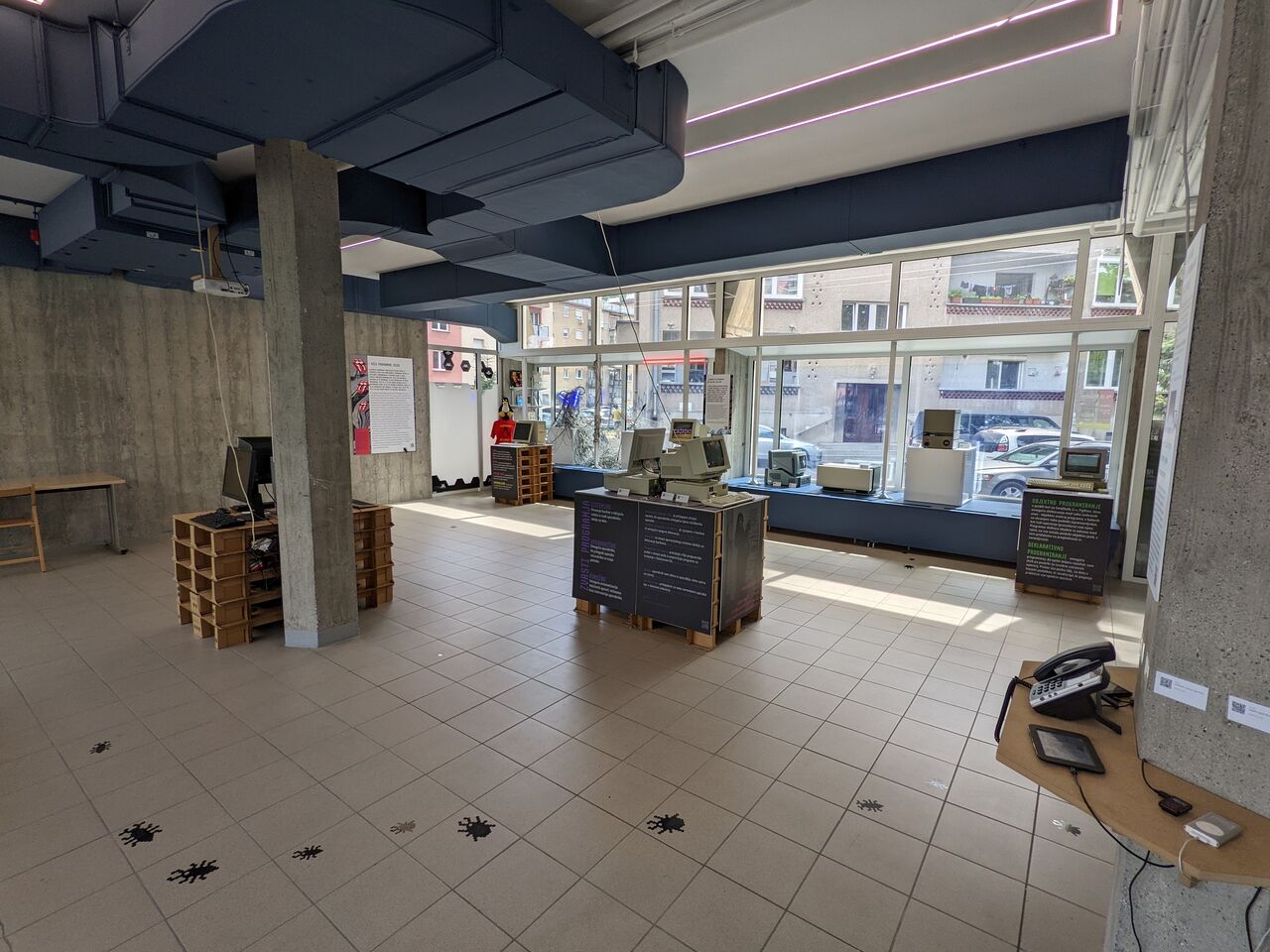 Exhibition at the Slovenian Computer History Museum, Ljubljana.
Exhibition at the Slovenian Computer History Museum, Ljubljana.
Besides the exhibitions every week the museum hosts various information technology-related events, meetups and conferences (space is always available to rent), in-house programming lessons for children aged 7-13 and pre-arranged guided tours of the exhibitions and various workshops related to computer science and emerging technologies such as generative artificial intelligence.
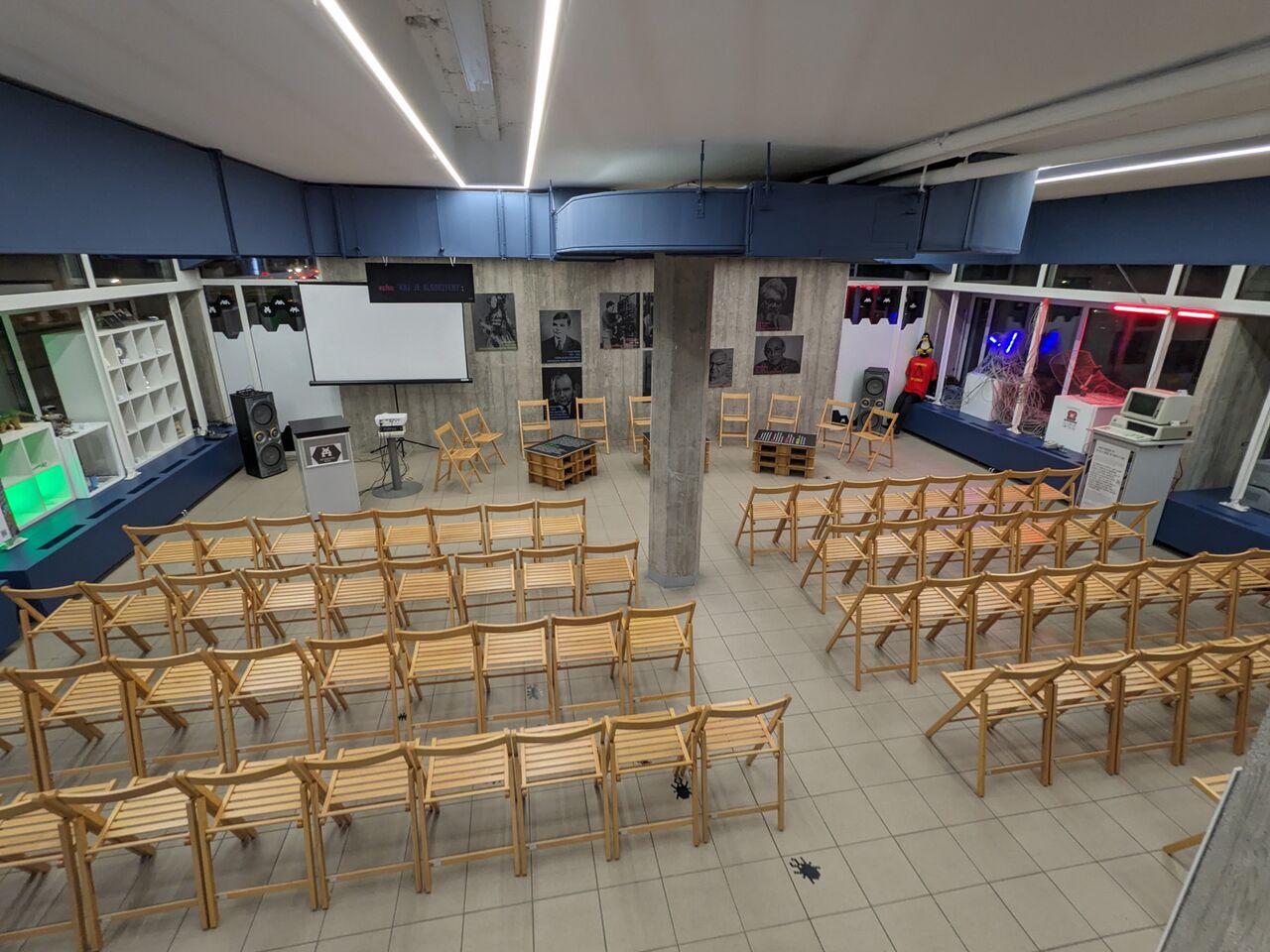 Slovenian Computer History Museum's event space, Ljubljana.
Slovenian Computer History Museum's event space, Ljubljana.
Background
The collection grew out of the Cyberpipe activities. This community hackerspace, focused on open source and other free technologies was established in 2000. It was managed by the K6/4 Institute up to 2013 when the association, established by the museum's founders, took over the museum collection. Two years later Cyberpipe dissolved.
Cyberpipe housed the first computer museum in Slovenia and organized many events or projects dealing with computer history. The museum was interactive so that visitors could use Commodore 64, ZX Spectrum, Atari 1040ST, Macintosh SE, IBM PS/1, IBM PC XT, etc.
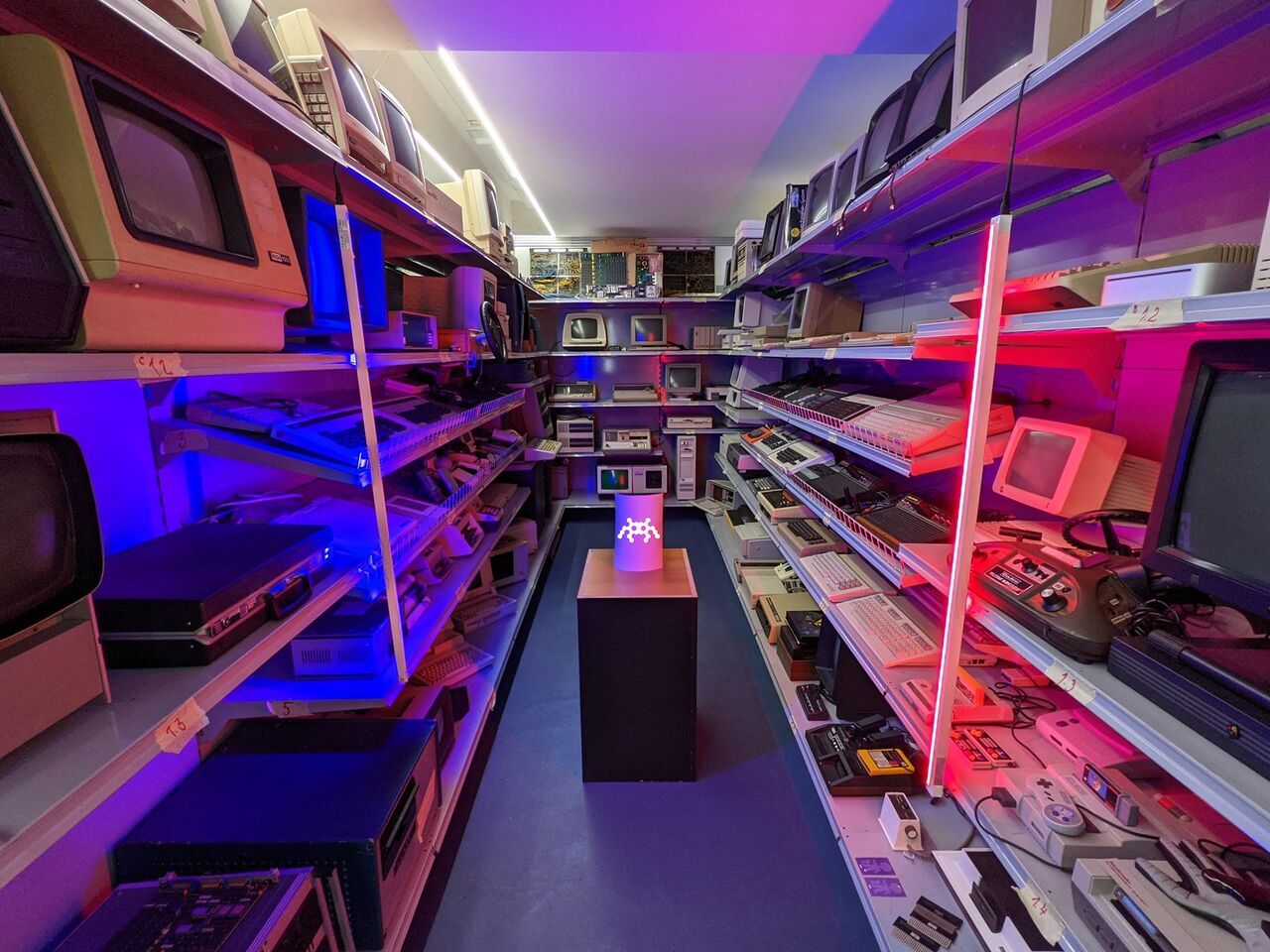 The Slovenian Computer History Museum's collection storage, Ljubljana.
The Slovenian Computer History Museum's collection storage, Ljubljana.
See also
Other IT collections in Slovenia:



